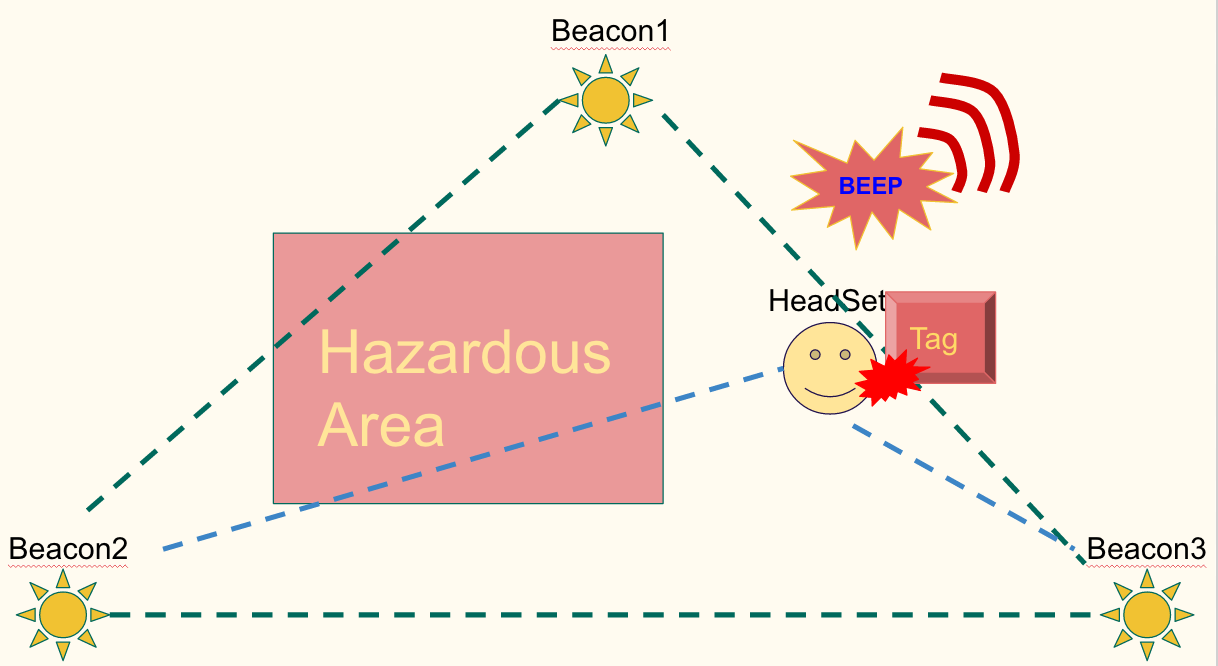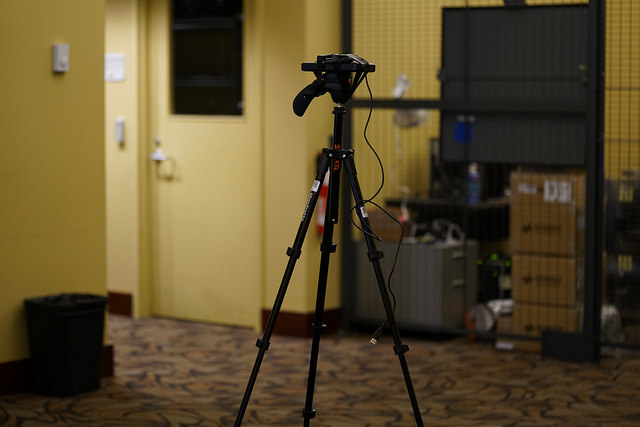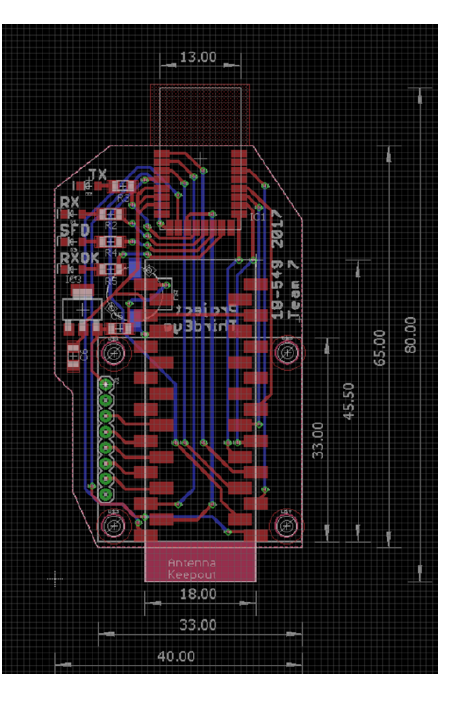Concept&Motivation Perception beyond ordinary sight
In many potentially dangerous work sites, such as factories and construction sites, there are many rules and regulations regarding worker safety. Sites like these often feature hazardous objects, such as heavy loads or volatile substances, as well as designated restricted zones which may not be entered due to dangerous conditions.
Project ThirdEye is a device that helps to promote safety in hazardous working areas, like construction sites or factories. Our system locates all users within a controlled site and accurately marks their position relative to hazardous areas and dangerous objects. Users receive audio alarms whenever they enter marked dangerous zones or come too close to dangerous objects. ThirdEye also provides a web application UI that displays the real-time locations of all users, hazardous objects, and hazardous areas on a map.

• Accurate Indoor Positioning
• Audio alert in dangerous zone
• Web app for user interface
• Defend your safety
Structure
Architecture

Use Cases


Interaction

Competitive Analysis

• Redpoint Positioning is a solution provider for real-time location services (RTLS) and the Redpoint B3 badge is designed to instantly alert clients when they stepping into a hazard zone.
• Our project is looking for achieving a similar safety functionality using DW1000 UWB location chip and also introduce communication feature, allowing clients to talk to each on private channel.

• The pozyx system is a hardware solution that provides accurate positioning and motion information, which consists of 5 modules, of which 4 anchors and one tag.
• This project is very similar to ours as it uses UWB technology and the same DW1000 chip. However, it’s a break our module designed for Arduinos, but ours project is a standalone functioning PCB, which can also provide voice communication capability.

• Infsoft Locator Nodes are modular hardware components that allow a comprehensive detection of different device types and providing location information, enabled through the modular system with different sensors such as WIFI, BLE, UWB, RFID and GPS.
• This product is rather a comprehensive solution that include all technologies to provide location information in all scenarios. As for now, our project focuses on the use of UWB technology, which definitely help reduce the cost.
Requirements
Hardware
| Name | Vendor | Estimated Cost | Specifications |
|---|---|---|---|
| Decawave | Digikey | $40 | data rates:110 kbit/s, 850 kbit/s & 6.8 Mbit/s , Preamble Length: 64 μs~4 ms, Modulation: BPM with BPSK Packet Sizes: up to 1023 bytes |
| Raspberry Pi | Amazon | $38 | 1.2GHz 64-bit quad-core ARMv8 CPU, 1 GB RAM,802.11n Wireless LAN, 10/100Mbps Lan Speed,Bluetooth 4.1, Bluetooth Low Energy |
| Nordic nRF52-DK | DigiKey | $39 | ARM mbed enabled Bluetooth low energy, ANT and 2.4GHz, |
| nRF52832 Breakout | Sparkfun | $19.95 | SWD through Nordic nRF52-DK enabled Bluetooth low energy, ANT and 2.4GHz, SPI, I2C, UART, PWM and ADC I/O support |
Software
| Name | Vendor | Language | Download |
|---|---|---|---|
| Xcode | Apple | Swift - iOS app development | Apple App Store |
| Eagle - PCB Design | AUTODESK | No programming language: GUI Interface | Autodesk |
| ARM mbed | mbed | C/C++ | mbed |
Protocol
| Name | Specifications |
|---|---|
| SPI | Communication between microcontrollers and the DWM1000 chip |
| Protocols from Low Power Ranger Project | This protocol is used to communication between PCBs and Anchors |
| HTTP | Use this protocol to connect to potential web server Have user access the Web App using this protocol |
| UART/ USB | Communication between Raspberry Pi and other hardwares/ computers. |
| BLE | Communication between control hub and beacons/headsets. |
| Time Division Multiplexing | Communication among headsets/Tags, beacons and control hub. |
Components
Beacons

Headset & Tag




UI

